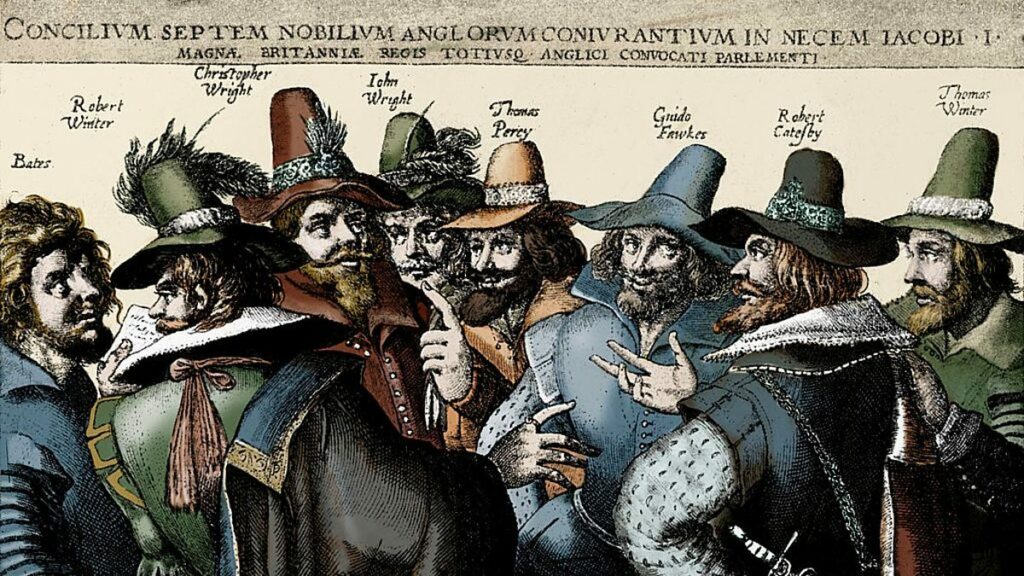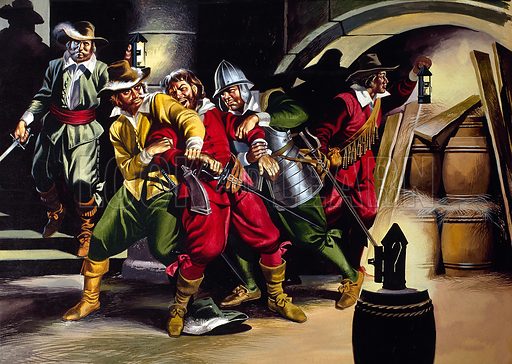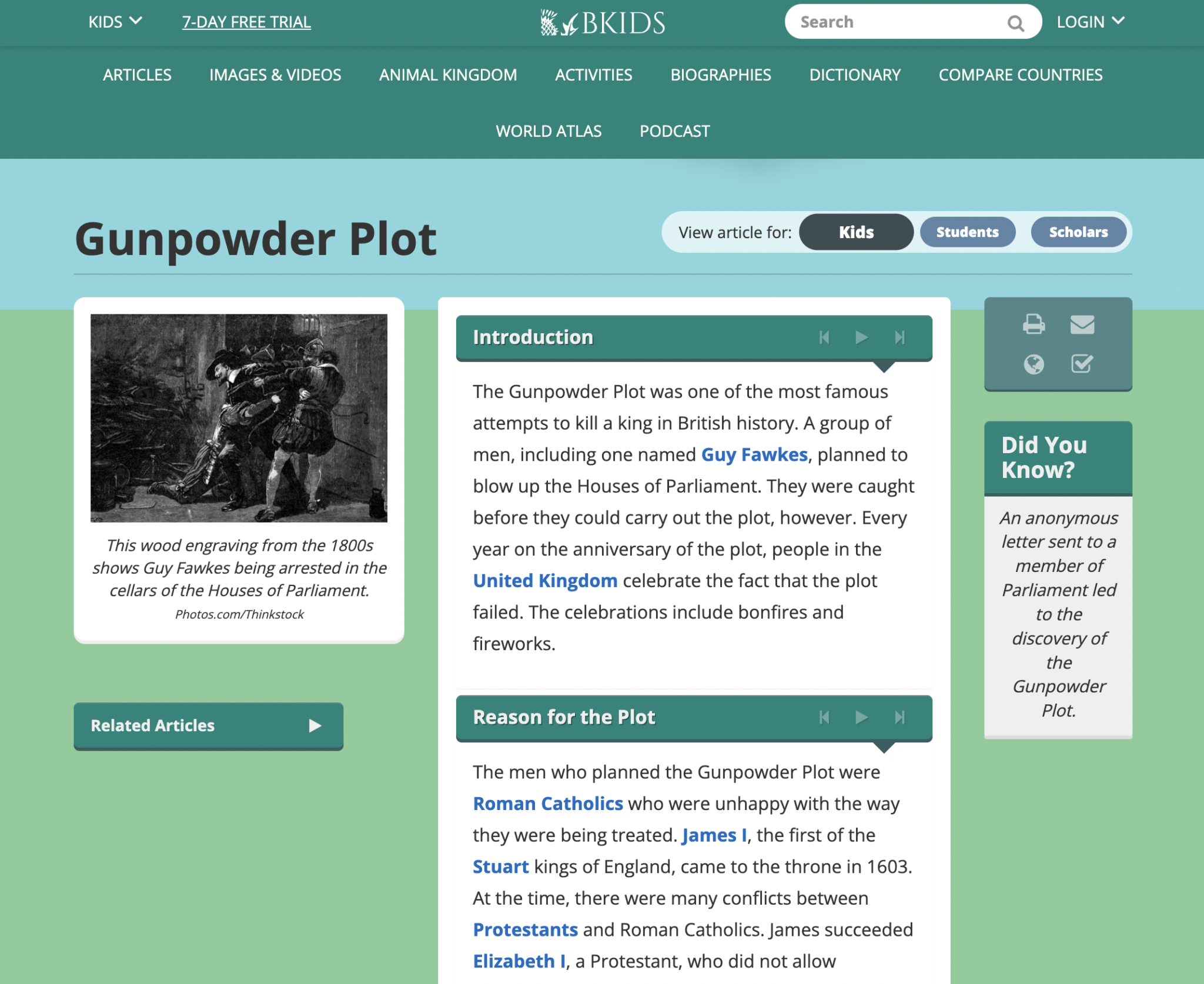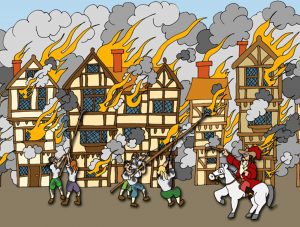What is the Gunpowder Plot?
The Gunpowder Plot was a plan made by a group of English Catholics in 1605 to blow up the Houses of Parliament in London. The plan was led by a man named Guy Fawkes, who was caught before the explosion could happen and arrested. The plot was foiled and the people involved were punished. It is now remembered every year on November 5th in England during a holiday called Bonfire Night, where people light bonfires and set off fireworks to celebrate the failure of the plot.
Who was involved in the plot?


The most famous man who was involved in the plot was Guy Fawkes. He and a group of other Roman Catholics were led by a man named Robert Catesby. Some of the other people involved were:
Thomas Percy, Francis Tresham, John and Christopher Wright, Thomas and Robert Winter, Thomas Bates, Ambrose Rookwood, Sir Everard Digby, Robert Keyes and John Grant
They all had different roles in the plot. Guy Fawkes’ role was to hide under the houses of parliament and set the barrels of gunpowder on fire, although he was caught red-handed before he could do so. Others were responsible for buying the gunpowder and other weapons.
Why did the Gunpowder Plot happen?
The Gunpowder Plot happened because a group of English Catholics were unhappy with the treatment of Catholics in England at the time. They felt that they were being persecuted and discriminated against by the Protestant government led by King James I. They believed that the only way to bring about change was through violent means, so they planned to blow up the Houses of Parliament in London during the State Opening of Parliament, with the King and all of the members of parliament inside. Their goal was to kill the King and as many members of parliament as possible, in an attempt to overthrow the government and restore a Catholic monarchy. The plot was foiled and the people involved were punished.
Why did the Gunpowder Plot fail?


The Gunpowder Plot failed for a few reasons. One of the main reasons was that one of the conspirators, Francis Tresham, had a change of heart and wrote a letter warning his brother-in-law, Lord Monteagle, not to attend the State Opening of Parliament. Lord Monteagle showed the letter to the King, and an investigation was launched.
Additionally, Guy Fawkes, who was in charge of guarding the explosives, was caught red-handed with the gunpowder on the night of November 4th, 1605, in the cellars beneath the House of Lords. He was searched and found to be carrying equipment used for lighting fuses, and was immediately arrested.
Furthermore, the conspirators’ plans were also hindered by the fact that they had difficulty obtaining enough gunpowder and by the fact that they were unable to keep their plans a secret.
All of these factors combined led to the failure of the Gunpowder Plot. The conspirators were arrested, tortured, and executed, and the event is still remembered in England each year on November 5th as a reminder of the failed attempt on the King’s life and government.






